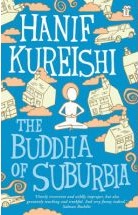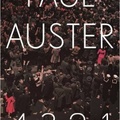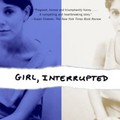Hanif Kureishi: The Buddha of Suburbia
 Hanif Kureishi’s novel is set in the 1970s in England, in a turbulent era when everything kept changing and evolving, and new political and cultural movements regularly surfaced overnight. The story deals with a single family and their circle of friends who all come from different backgrounds and nationalities (English and Indian; working-class and elite) and who all try to find their way in life and fulfill their potentials in very different ways.
Hanif Kureishi’s novel is set in the 1970s in England, in a turbulent era when everything kept changing and evolving, and new political and cultural movements regularly surfaced overnight. The story deals with a single family and their circle of friends who all come from different backgrounds and nationalities (English and Indian; working-class and elite) and who all try to find their way in life and fulfill their potentials in very different ways.
The protagonist and narrator of the novel is Karim, a boy coming from an Indian and English family background, who lives in one of the bleak and boring suburbs of London. At the beginning of the story, his father – a fake Indian guru pretending to be a wise „Buddha” – leaves his family to start a new life with Eva, a wannabe artist whose main ambition is to move in to the „real” London and find herself a place in the artistic world of the city. The falling apart of his family takes its toll on Karim, and it’s probably due to this that he grows up to be an exceptionally troubled young man. He tries himself in a lot of roles and tries to adapt to several different cultural and artistic scenes (e.g. he tries his hands in acting; he becomes a punk for a while; he moves in together with a bunch of hippies), but he never feels at home – in fact, Karim is always on the road but never arrives anywhere.
But Karim is not the only one in the novel who lives like this – every single character constantly feels the urge to change (the world or themselves), no matter how old they are or what their situation in life is. Karim’s father, for instance starts out as an assiduous clerk and ends up as the „Buddha of Suburbia”, preaching the importance of spirituality; Karim’s childhood friend, Jamila, who lives in an prearranged marriage with a husband she doesn’t care about becomes a hippie; and his mother, who contentedly lived the life of a „simple” wife and shop assistant suddenly chooses a new vocation for herself when her husband leaves her. And so on.
Kureishi does a very good job depicting the atmosphere of England in the 1970, and he also writes in a convincing fashion about the way natives and immigrants, artists and wannabe artists, anarchists, communists, hippies and punks lived their life. The novel is full of that mood which The Smashing Pumpkins describes as the „urgency of now” in their song „1979”: the characters are restless, their minds are full of plans and they want self-realization – but immediately. Thanks to this, this is not a novel to get lost in: everything happens too quickly, but I often get the feeling as if I were missing out on the „real” events, the real moment, or as if the whole novel were only the introduction to something „big”, and real life would only start after the end of the story. This feeling is all the more powerful because in several cases we are not shown what happens – we only hear about it. For instance, Karim once talks about being seriously depressed, but his depression is barely perceptible, we only know about it because he mentions his condition – and this I may or may not believe. What I mean is that not only do we miss out on the events but also on the reality of the characters – but it’s not that surprising, given the fact that they themselves miss out on their own lives, being forever occupied with changing something, and they tend to forever postpone the start of their „real” life.
Because of all this, The Buddha of Suburbia is a very annoying and frustrating read – it’s definitely not pleasant to try to live the lives of characters who in turn refuse to live their own lives. Moreover, I haven’t for a long time met as disagreeable a narrator as Karim. Anyway, as a portrait of an era and its general mood, this is a very good book.





